\)
Advanced
PID Control
Karl J. Astrom Tore Hdgglund
Department of Automatic Control
Lund Institute of Technology
Lund Uniuersity
z\
Jlsnr
,?
Systems,
ISA-The
Instrumentalion,
and Automation Society
�
Copyright @ 2006 by
ISA - Instrumentation, Systems, and Automation Society
67 Alexander Drive
P.O. Box 12277
Research Triangle Park, NC 27709
All rights reserved.
Printed in the United States of America.
1 0 9 8 7 6 5 4 3 2
ISBN r-55617-942-r
No part of this work may be reproduced, stored in a retrieval system, or transmitted in
any form or by any means, electronic, mechanical, photocopying, recording or
otherwise, without the prior written permission of the publisher.
Notice
The information presented in this publication is for the general education of the
reader. Because neither the author nor the publisher has any control over the use of
the information by the reader, both the author and the publisher disclaim any and all
liability of any kind arising out of such use. The reader is expected to exercise sound
professional judgment in using any of the information presented in a particular
application.
Additionally, neither the author nor the publisher have investigated or considered
the effect of any patents on the ability of the reader to use any of the information in a
particular application. The reader is responsible for reviewing any possible patents
that may affect any particular use of the information presented.
Any references to commercial products in the work are cited as examples only.
Neither the author nor the publisher endorses any referenced commercial product. Any
trademarks or tradenames referenced belong to the respective owner of the mark or
name. Neither the author nor the publisher makes any representation regarding the
availability of any referenced commercial product at any time. The manufacturer's
instructions on use of any commercial product must be followed at all times, even if in
conflict with the information in this publication.
Library of Congress Cataloging-in-Publication Data
Astrtjm, Karl J. (Karl Johan), lg34-
Advanced PID control / Karl Johan Astrom and Tore Hagglund.
p. cm.
Includes bibliographical references and index.
ISBN 1-55617-942-1 (pbk.)
1. PID controllers. I. Hrigglund, Tore. II. Title.
TJ223.P55A85 2006
629.8'3--dc22
20050r4664
�
Preface
The PID controller is the most common solution to practical control problems.
Although controllers with proportional and integral action have been used from
the time when windmills and steam engines were the dominant technologies,
the current form of the PID controller emerged with the pneumatic controllers
in the 1930s. The controllers have been implemented in many different ways
using mechanical, pneumatic, electronic, and computer technolory. The devel-
opment accelerated when the microprocessor implementations appeared in the
1980s. One reason was that the computer implementations made it possible
to add features like auto-tuning and diagnostics, which are very beneficial for
users. From an engineering perspective, it is particularly interesting to ana-
lyze what happened at the technology shifts, when some important features
were rediscovered and others were added.
This book has grown out of more than 25 years of development of auto-
tuners for PID controllers in close collaboration with industry. Through this
work, we have been exposed to a large number of real industrial control prob-
lems. We have benefited much from participating in development, commission-
ing, and troubleshooting of industrial controllers. The practical work has also
inspired research.
This book is the last part of a trilogy. The first book, Automatic Tfu.ning of
PID Controllers, 1988, which had 6 chapters, gave a short description of our
early experiences with development of relay auto-tuners. The second book, PID
Controllers: Theory, Design,, and Tfu.ning, 1995, which has 7 chapters, grew out
of the need for a broader coverage of many aspects of PID control. In particular,
it reviews many design methods for PID controllers that we investigated in
connection with our work on auto-tuners.
The knowledge about PID control in 1995 still was not satisfactory for de-
sign of auto-tuners. One drawback was that the user had to provide the con-
troller with design choices. It is particularly difficult for a user to assess if
dynamics is dead-time or lag dominated. This question stimulated further re-
search. Because of the drastic increase in computing power, it was also possible
to use design algorithms that require more computations.
Thning and design of PID controllers have traditionally been based on spe-
cial techniques. Robust control was a major development of control theory that
matured in the late 1990s, resulting in powerful design methods based on ro-
bust loop shaping. This stimulated us to initiate a research program to adapt
�
Preface
these methods to PID control. At the same time, it seemed natural to bring
PID control closer to the mainstream ideas in control. When working with in-
dustrial auto-tuners, we also saw a great need to include diagnostics in the
controller, because it is no use to tune a controller if the process has severe
malfunctions. The present book, Aduanced PID Control, is the result of this
effort.
With a total of 13 chapters, this new book substantially expands on some of
the topics covered in the previous versions and provides several new chapters
that deal with controller design, feedforward design, replacement of the Ziegler-
Nichols tuning rules, predictive control, loop and performanee asqeqqrnnnr ?-i
interaction. At this point in our book trilogy, we assume that the reader rb
highly familiar with control theory.
Our research has given a deeper understanding of the trade-offs between
load disturbance attenuation, injection of measurement noise, and set-point
response. We have also been able to answer questions like: Should a controller
be tuned for response to load disturbances or set points? What information
is
required to design a PID controller? When can derivative action give signif-
icant improvements? When are more complicated controllers justified? When
is it justified to develop more accurate process models? With the knowledge
developed, it is now possible to design auto-tuners that can make these assess-
ments autonomously. In addition, we have developed new simple methods for
designing PID controllers.
As an example of the insight gained we can mention that control theory
tells that it is not necessary to make a compromise between tuning for load
disturbance response and set-point response. Both requirements can be satis-
fied by using a controller with two degrees of freedom, which combines feedback
and feedforward. The feedback gains should be chosen to satisfy requirements
on disturbance attenuation and robustness. The desired response to set-point
changes can then be obtained by proper use of feedforward. Set-point weighting
is a simple form of feedforward for PID control. In some cases, it is justified to
use more elaborate feedforward. For this reason, we have included a chapter
on controller design and another chapter on feedforward in the new book.
The robustness analysis also shows the advantage of having low controller
gain at high frequency, high frequency roll-off. This can be accomplished by
flltering the process output by a second order filter. Based on the insight ob-
tained, we recommend extended use of set-point weighting or more advanced
feedforward. We also recommend that the process output is fiItered using a
second order filter.
We would like to thank many people who have given knowledge, insight,
and inspiration. Our interest in PID control was inspired by Axel Westrenius
and Mike Somerville of Eurotherm in the early 1980s. We have learned much
from working with students; particular
thanks are due to Lars Gdran Elfgren
(Eurotherm), Giiran Grtinhammar (LTH), Ari Ingimundarson (UPC), Oskar
Nordin (Volvo), Helene Panagopoulos (Volvo), Per Persson (Volvo), Mikael Pe-
tersson (ABB), Ola Slattke (ABB), and Anders Wall6n (Ericsson Mobile Plat-
forms), who continue to give us valuable insight even if they are now pursuing
careers in industry.
We are very grateful to Sune Larsson and Lars Beath, formerly of NAF
vi
�
Controls, with whom we developed the first industrial relay auto-tuner. The
company NAF Controls was merged several times and is now part of ABB,
where we have enjoyed interactions with Gdran Arinder, Alf Isaksson, Per Erik
Mod6n, Lars Pernebo, and Thomas Vonheim. We have shared the joy and chal-
lenges in moving techniques for auto-tuning and diagnostics into a wide range
of industrial products. Many stimulating discussions with our colleagues Anton
Cervin (LTH), Sebastian Dormido (UNED), Gty Dumont (UBC), Chang Chieh
Hang (NUS), Karl Henrik Johansson (KTH), Birgitta Kristiansson (CTH),
Bengt Lennartsson (CTH), Manfred Morari (ETH), Dale Seborg (UCSB), Sig-
(LTH), and Karl-Erik Arz6n (LTH)
urd Skogestad (NTNU), Bjiirn Wittenmark
from academia are also highly appreciated.
Our friends in industry Bill Bialkowski, Terry Blevins, Greg McMillan,
and Willy Wojsznis from Emerson, Edgar Bristol, Sigifredo Niflo, and Greg
Shinskey from Foxboro, Bdrje Eriksson (M-real), Krister Forsman (Perstorp),
Ken Goff (Leeds and Northrup), Niklas Karlsson (Evolution Robotics), Joseph
Lu (Honeywell), Tor Steinar Schei (Cybernetica), Stefan Rtrnnbiick (Optima-
tion), have generously shared their knowledge and insight with us. We are
particularly grateful to Peter Hansen, formerly of Foxboro, who read the com-
plete manuscript and gave us very good feedback.
We are very grateful to Leif Andersson who made the layout of the text and
gave much assistance with TbX, Agneta T\rszyriski who translated much of the
text to I4rIbX, and Eva Dagnegfird who drew several of the figures.
Finally, we would like to thank the Swedish Research Council (VR), the
Swedish Agency for Innovation Systems (VINNOVA), and the Swedish Foun-
dation for Strategic Research (SSF) who have supported our research for many
years.
Kanr, JoHaN AsrnOnt
Tonn HAccluNn
Department of Automatic Control
Lund Institute of Technology
Box 118, SE-22I00 Lund, Sweden
karl-j ohan. astrom@control . Ith. se
tore . hagglund@control . lth. se
vu
�
Contents
1 .
2.
3.
4.
Technology Changes and Knowledge Thansfer
Summary
.
Introduction .
Static Models
Feature-Based Models
Tlpical Process Models
. : . : . : .
Introductio"
Feedback
Simple Forms of Feedback
Introduction
1.1
1.2
1.3
1.4 How the PID Controller Developed
1.5
1.6 Outline of the Contents of the Book .
I.7
1.8 Notes and References
Process Models
2.1
2.2
2.3 Dynamic Models
2.4
2.5
2.6 Models for Disturbances .
2.7
How to Obtain the Models
2.8 Model Reduction
2.9
2.t0 Notes and References
PID Control
3.1
3.2
3.3
3.4
3.5
3.6 When Can PID Control Be Used?
3.7
3.8 Notes and References
Controller Design
4.1
4.2
4.3
4.4
Introduction .
A Rich Variety of Control Problems
Feedback Fundamentals .
Stability
Introduction .
The PID Controller .
Filtering the Derivative
Set-Point Weighting
Integrator Windup
Summary
.
Summary
1
1
2
3
5
7
8
10
10
t2
t2
13
T4
23
28
44
47
56
6 1
62
64
64
64
73
74
76
87
92
93
95
95
96
96
r02
ix
�
Contents
6.
7.
Classical Specifications
Introduction .
Improved Set-Point Response .
Set-Point Weighting
Fast Set-Point Response .
Summary
Notes and References
Closed-Loop Poles and Zeros
The Sensitivity Functions .
Robustness to Process Variations
Introduction .
Ziegler-Nichols and Related Methods
Rule-Based Empirical T\rning.
Pole Placement
Lambda T\rning .
Algebraic Design
4.5
4.6
4.7
4.8 Quantifying the Requirements
4.9
4.10 Summary
A.LI Notes and References
Feedforward Design
5.1
5.2
5.3
5.4 Neutral Feedforward .
5.5
5.6 DisturbanceAttenuation
5.7
5.8
PID Design
6.1
6.2
6.3
6.4
6.5
6.6
6.7 Optimization Methods
Robust Loop Shaping
6.8
6.9
Summary
6.10 Notes and References
A Ziegler-Nichols Replacement
7.1
7.2
7.3
7.4
7.5
7.6
7.7
7.8 Measurement Noise and Filtering
7.9 Detuning .
7.10 Summary
7.1I Notes and References
Predictive Control
Introduction .
8.1
8.2 The Smith Predictor
8.3 Analysis of Smith Predictor Control .
8.4 The PPI Controller .
8.5 Predictors for Integrating Processes
8.6 Model Predictive Control
8.7 Summarv
Introduction .
The Test Batch
PI Control .
PID Control
Frequency Response Methods
PID Control Based on Second-Order Model
Comparison of the Methods .
109
1 1 1
1 1 8
122
128
136
137
139
139
139
I45
I46
150
154
156
157
158
158
159
169
t74
186
189
196
206
221
222
225
225
226
228
230
238
242
247
251
253
262
265
266
266
267
271
279
283
285
291
�
Introduction .
Integrated Ttrning and Diagnosis
Introduction .
Interaction of Simple Loops .
.
Notes and References
Supervision of Adaptive Controllers
Iterative Feedback Ttrning
Commercial Products
Summary
8.8
Automatic Thning and Adaptation
Introduction .
9.1
Process Knowledge .
9.2
Adaptive Techniques .
9.3
9.4 Model-Based Methods
9.5 Rule-Based Methods
9.6
9.7
9.8
9.9
9.10 Notes and References
Loop and Performance Assessment
10.1
I0.2 Valves
10.3 Loop Assessment
10.4 Performance Assessment
10.5
10.6 Summary
10.7 Notes and References
Interaction
11.1
LI.2
11.3 Decoupling
1I.4 Parallel Systems
11.5 Summary
11.6 Notes and References
Control Paradigms
12.1
Introduction
I2.2 Bottom-Up and Top-Down Approaches
12.3 Repetitive Control
12.4 Cascade Control
I2.5 Mid-Range and Split-Range Control .
12.6 Nonlinear Elements
I2.7 Neural Network Control .
I2.8 Fuzzy Control .
I2.9 System Structuring
12.10 Summary
t2.II Notes and References
Implementation
13.1
I3.2 Analog Implementations
13.3 Computer Implementations .
13.4 Velocity Algorithms
13.5 OperationalAspects
13.6 Controller Outputs .
L3.7 Summarv
Introduction .
10.
l l .
12.
13.
Contents
292
293
293
294
295
298
302
304
3 1 3
3 1 6
327
327
329
329
329
334
336
344
345
346
347
347
347
354
360
364
365
366
366
367
368
373
378
3 8 1
389
392
398
404
406
407
407
408
4r2
420
423
427
43r
xi
�
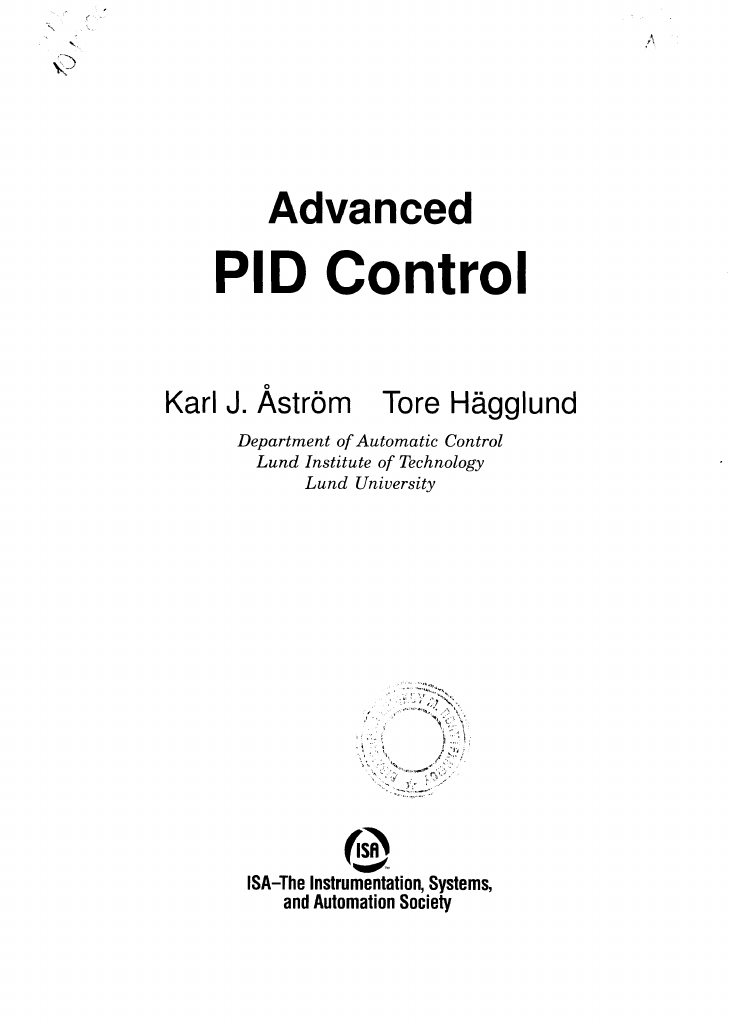
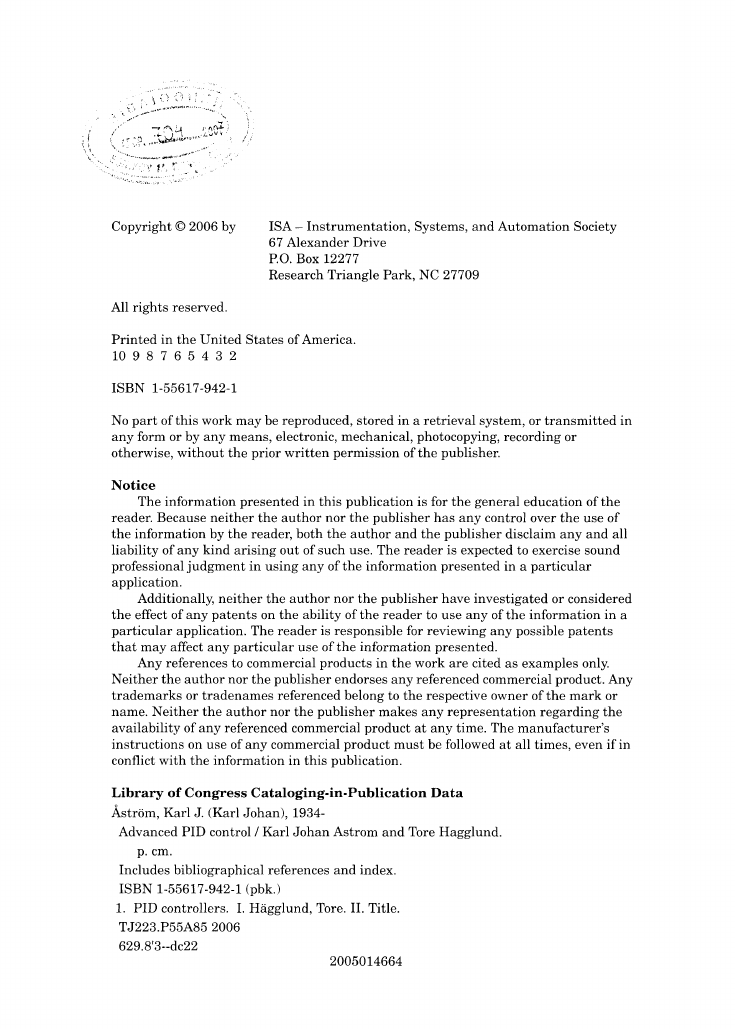
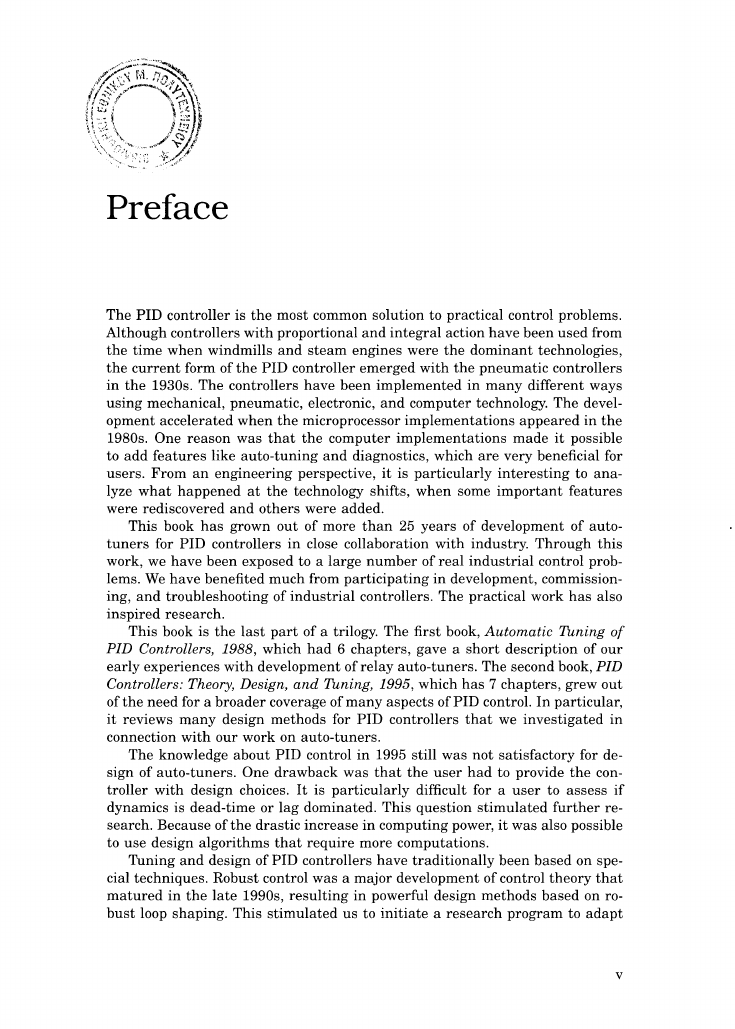
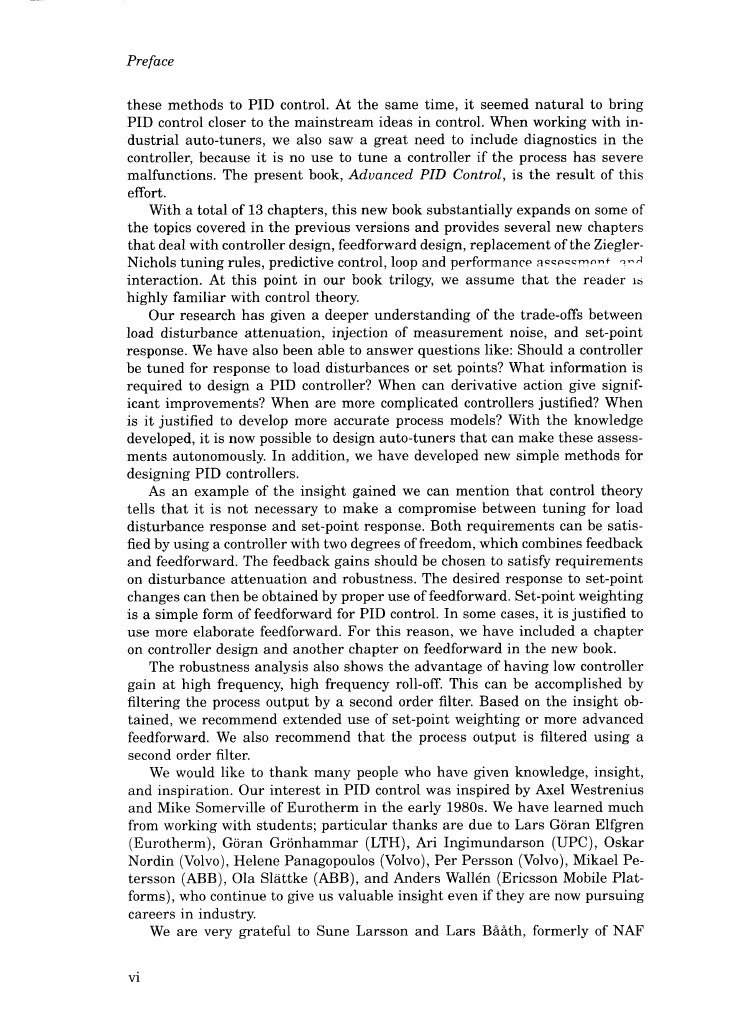
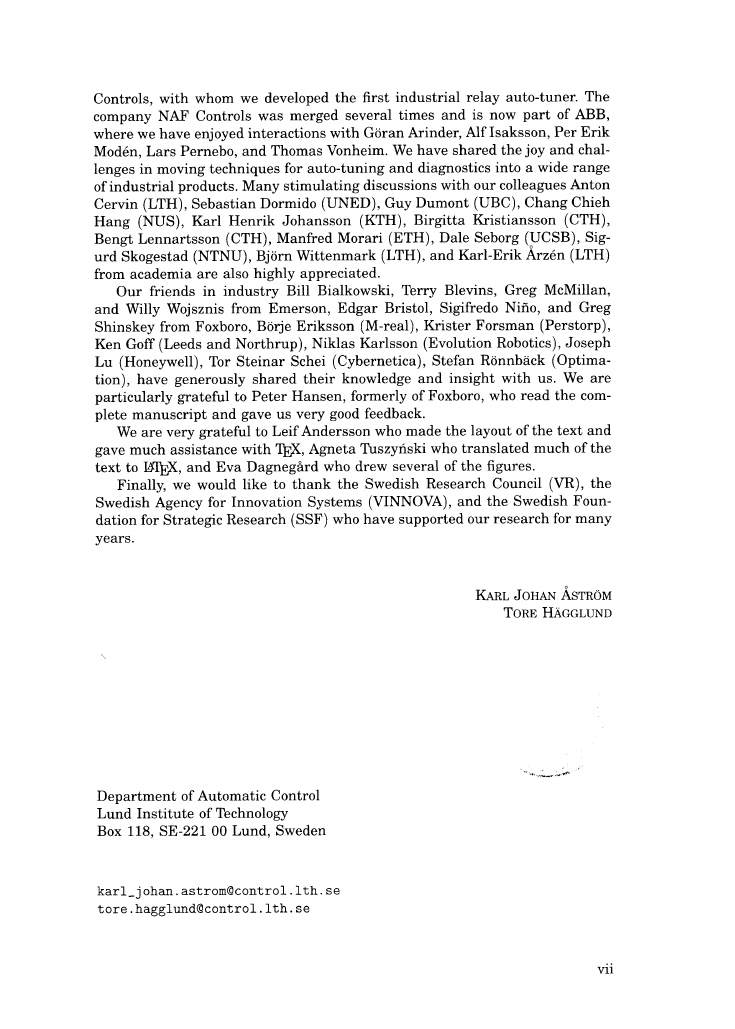
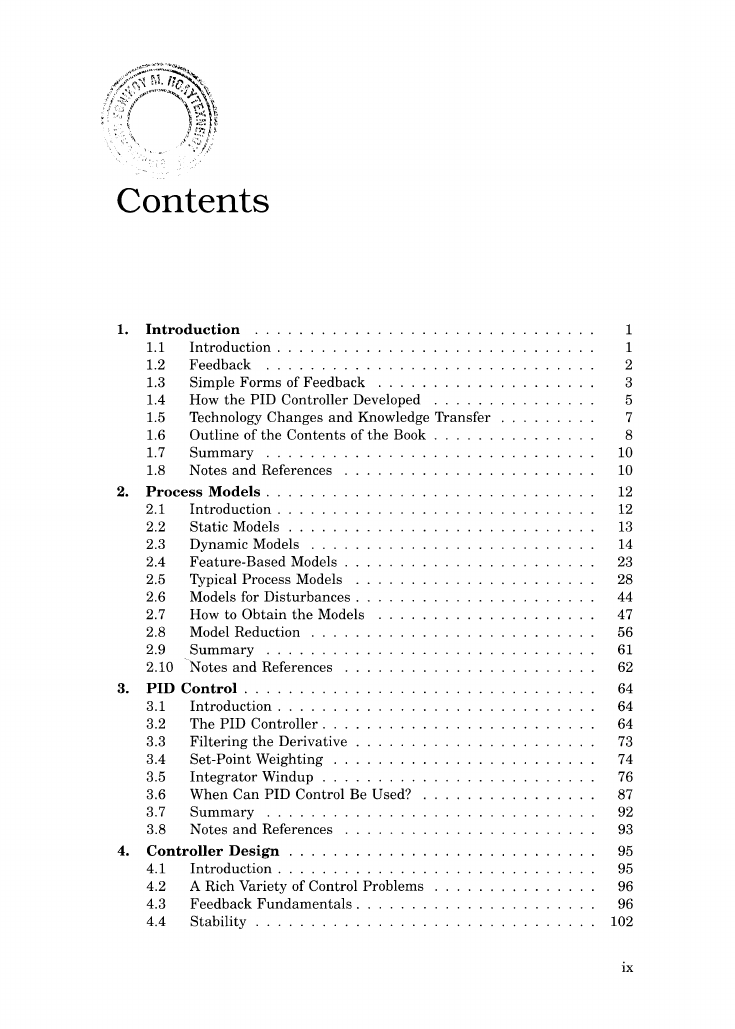
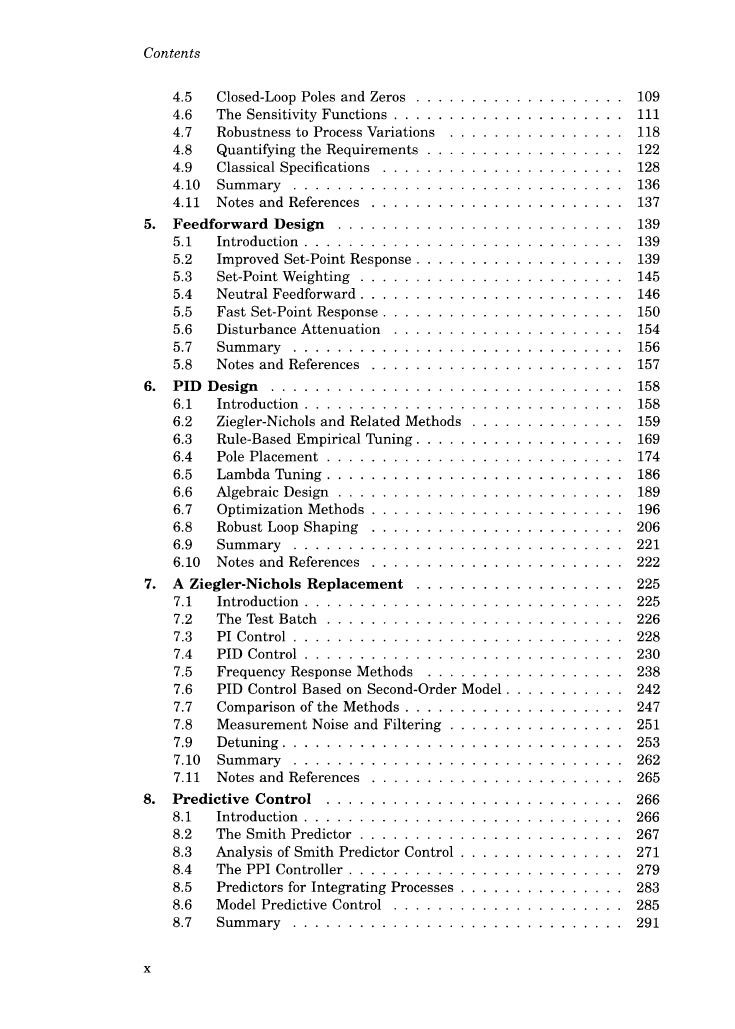
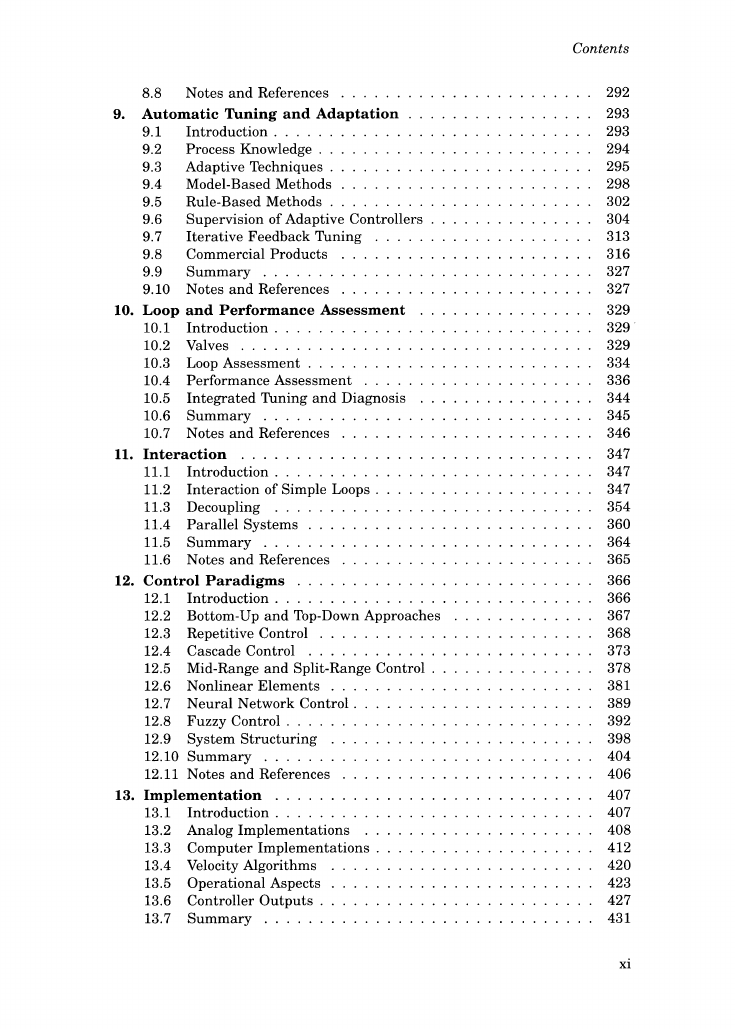








 2023年江西萍乡中考道德与法治真题及答案.doc
2023年江西萍乡中考道德与法治真题及答案.doc 2012年重庆南川中考生物真题及答案.doc
2012年重庆南川中考生物真题及答案.doc 2013年江西师范大学地理学综合及文艺理论基础考研真题.doc
2013年江西师范大学地理学综合及文艺理论基础考研真题.doc 2020年四川甘孜小升初语文真题及答案I卷.doc
2020年四川甘孜小升初语文真题及答案I卷.doc 2020年注册岩土工程师专业基础考试真题及答案.doc
2020年注册岩土工程师专业基础考试真题及答案.doc 2023-2024学年福建省厦门市九年级上学期数学月考试题及答案.doc
2023-2024学年福建省厦门市九年级上学期数学月考试题及答案.doc 2021-2022学年辽宁省沈阳市大东区九年级上学期语文期末试题及答案.doc
2021-2022学年辽宁省沈阳市大东区九年级上学期语文期末试题及答案.doc 2022-2023学年北京东城区初三第一学期物理期末试卷及答案.doc
2022-2023学年北京东城区初三第一学期物理期末试卷及答案.doc 2018上半年江西教师资格初中地理学科知识与教学能力真题及答案.doc
2018上半年江西教师资格初中地理学科知识与教学能力真题及答案.doc 2012年河北国家公务员申论考试真题及答案-省级.doc
2012年河北国家公务员申论考试真题及答案-省级.doc 2020-2021学年江苏省扬州市江都区邵樊片九年级上学期数学第一次质量检测试题及答案.doc
2020-2021学年江苏省扬州市江都区邵樊片九年级上学期数学第一次质量检测试题及答案.doc 2022下半年黑龙江教师资格证中学综合素质真题及答案.doc
2022下半年黑龙江教师资格证中学综合素质真题及答案.doc